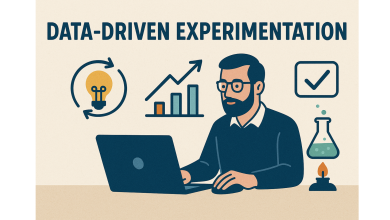
Having excellent data management allows organisations to use AI to its full potential. However, The International Data Corporation (IDC) reports that just 14% of employees find the data insights in their daily work actionable. How can organisations address this disparity? The solution involves striking a balance between disruptive AI applications and robust data infrastructures.
Such a solution creates a positive feedback loop – AI improves data processes while high-quality data fuels data-driven AI insights. But what does this mutually beneficial relationship look like in practice? Semarchy and Amplifi have built a strategic partnership that enables organisations to rapidly deploy Semarchy’s market-leading master data management (MDM) solution, drive quick adoption in their teams, and prove value quickly.
Here, we’ll look at 5 scenarios where strong data management and AI create great outcomes.
1. Data mapping and integration
Data integration projects typically require extensive mapping to merge data from various sources into a unified view. AI makes this process smarter and faster.
AI models are trained on data architecture, metadata, and existing mappings. As organisations introduce new data sources, these AI models intelligently propose mapping guidelines and transformations. This intelligence then allows AI to automate parts of the mapping process.
This approach provides additional support while keeping human experts in control, complimenting a team’s expertise and streamlining projects without suffering on quality.
Businesses can directly tackle their data pipeline challenges by combining Semarchy’s data integration technology with Amplifi’s data management expertise. Whether dealing with extensive data columns or real-time demands, the Semarchy Data Platform empowers organisations to deploy custom integrations and adapt cost-effectively to evolving business and technical needs.
2. Data quality monitoring
Businesses cannot feed inconsistent data to an AI. Incorporating AI into data quality oversight allows organisations to automate the identification of irregularities, errors, and discrepancies throughout their data assets.
AI models are trained to recognise the patterns that define an organisation’s data quality standards. Once implemented, these models perpetually oversee data flows, highlighting any violations or anomalies. It’s comparable to always having an extra set of eyes on your data.
This approach lightens the burden on data stewards and catches issues early. Gone are the days of painstaking manual checks — the AI takes on the hard work, allowing teams to concentrate on resolving other issues. The result is reliable, high-quality data pipelines that deliver reliable AI-generated insights. Additionally, data quality and accuracy can reduce compliance headaches. As data regulation laws change all the time, AI can help ensure data is always in line with the most up-to-date agreements, meaning you are at less risk of a non-compliance fine.
3. Automated data cataloguing
A comprehensive understanding of the company’s data landscape is essential for effective data governance and enabling AI capabilities, but is a huge undertaking.
AI models can be trained to comprehend data taxonomy, metadata conventions, and business terminology. Once implemented, these models automatically analyse new data sources, classify them according to type, content, and relationships, and apply appropriate metadata tags. This significantly reduces data stewards’ manual classification workload.
AI-powered data classification offers a more comprehensive and current view of an enterprise’s data estate. This improved data governance empowers businesses to build and deploy AI applications confidently.
4. Added insights from unstructured data
Most organisational data exist in unstructured formats; documents, emails, images. These sources are brimming with valuable insights, but extracting these insights is challenging.
This is where AI’s ability to process unstructured data proves invaluable. Using natural language processing and computer vision, AI models can automatically sift through these unstructured data repositories to pinpoint key entities, themes, sentiments, and other relevant metadata embedded within the content.
This technology effectively connects structured analytics systems with unstructured data lakes, often sidelined due to their complexity. AI assists with integrating these untapped data sources into analytical and decision-making processes, unlocking their value.
5. Cloud migrations
Cloud migrations are becoming more and more common. Traditional manual approaches to preparing and refactoring data for the cloud can be time-consuming and error-prone, potentially delaying migration initiatives. AI offers a solution to simplify this data preparation phase.
AI models can be trained to intelligently profile, map, and transform data for cloud migration. They can automate schema conversions, encoding changes, data mapping, and other necessary transformations. By handling these repetitive and complex tasks, AI significantly reduces the need for manual intervention.
Leveraging AI allows organisations to tackle complex migration projects that would require substantial human resources and be susceptible to data integrity issues.
A yin and yang combination
Artificial intelligence and data management are deeply interconnected, resembling a balanced yin-yang dynamic. When guided by ethical practices and sound governance, it creates a self-reinforcing cycle that continuously improves both components.
AI elevates data management practices by automating tasks, uncovering novel insights, and boosting data quality. For organisations seeking to optimise their AI investments, the way forward is evident. Embrace this mutually beneficial relationship by focusing on robust data management strategies that allow AI’s capabilities to flourish and reach their full potential.
To see how Semarchy can support your business’s MDM, head to our website for more information and grab our free eBook all about what MDM is and how it works!




